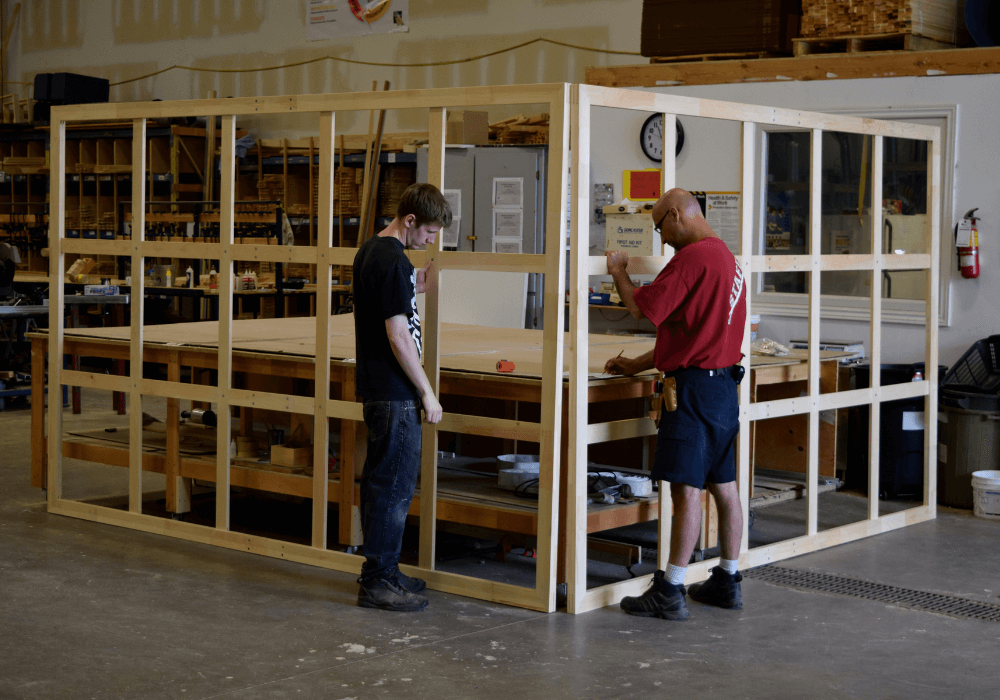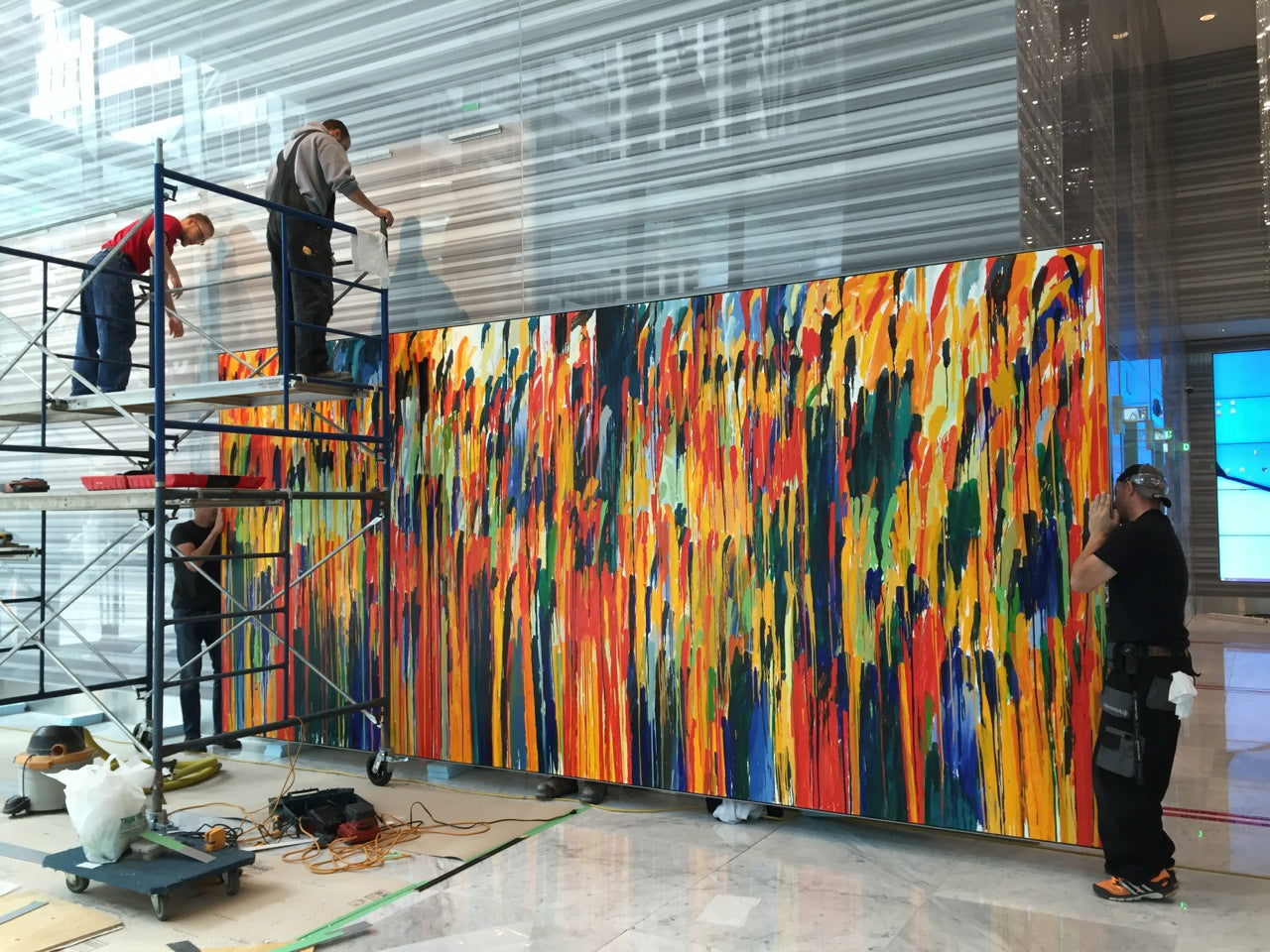Perhaps you’re in search of corporate artwork to suit your space, or looking to add a new piece to your private art collection. The decision to commission a painting gives you input into what the finished piece might look like and let’s face it, it’s exciting to see your ideas and vision come to life!

Leonardo da Vinci’s 15th century mural The Last Supper was a commissioned painting.
Artists of all stripes do commissions. The Last Supper by Leonardo da Vinci, one of the most famous paintings in history, was a commissioned piece. Da Vinci’s patron, Ludovico Sforza, Duke of Milan commissioned the painting in or around 1495. Historically, commissioning art was a way to show your support and sponsor an artist and even in these times of more commercial applications of art, you can be a patron through the commissioning of a piece.
So what are you looking for, and how can you best protect your investment in commission artworks? Here are 5 questions you’ll want to ask your artist.
1. CAN I SEE YOUR PORTFOLIO OF WORKS IN THE STYLE WE’RE SEEKING?
You might already have fallen in love with a particular artist’s style, which inspired you to commission a piece. Even if you’re interviewing a short list of different artists, you want to make sure that their style matches the piece you’re envisioning. That abstract painter you enjoy may not be the best choice for the landscape piece you want (but then, they just might!). Have a look at a larger body of their work to get a more complete picture of their style and capabilities.

Accomplished commissioned portrait artist James (Jerry) Crowley’s ‘A. Redding & Son.’
You’ll also want to see other commissioned pieces of a similar size and style where they’re displayed, if possible.
2. CAN WE TALK BUDGET?
Disagreements or misunderstandings over budget can end an art commission before it begins. It’s worth hammering out the details early on, to make sure your chosen artist is the right fit.

Painter Louise Moore on a large art commission for public display.If your budget is tight, you’re probably going to have better luck securing a commitment from an emerging artist. More established artists command higher rates and may have less availability, as well. In your negotiations on price, you’ll need to consider:
- the subject and medium
- how the piece will be displayed (publicly/commercially or privately)
- the size of the piece
- pricing structure (hourly or by the piece?)
- whether the artist’s administrative time is included in the project fee
- how the project fee will be broken into payment milestones
- who will own the rights to the piece and how the artist might continue to use it
3. HOW MUCH INPUT WILL I HAVE, AND WHEN?
The communication and approvals process can be another touchy area between artist and patron. No one likes to be micromanaged, nor on the receiving end of a lengthy disappearing act. It’s worth being specific about how you’ll work together.
Working with an artist who has experience navigating the process of commissioned pieces (like Marco Sassone, featured above) can help ensure a smooth relationship from start to finish.
How will you keep in touch, and how often? Will you receive regular progress updates? How much time will you have for review and requests for revisions? Will you notify one another if one of you is unavailable for some time?
4. CAN I SPEAK WITH OTHERS WHO HAVE COMMISSIONED ART FROM YOU?
The quality of a finished piece speaks for itself. However, you still need input on how the artist works with their clients. Are they responsive? Were there delays in production? Were they true to the patron’s vision and ideas? Were there any issues you should know about?
Call each of the artist’s references and have an honest discussion about what it’s like working with the artist.

Cleveland artist Jill West Hungerford combines realism and imagination in her works; she has over a decade of experience in cloisonné. Get to know your desired style and let that guide your choice of commissioned artist.
5. WHAT MATERIALS DO YOU USE FOR ART COMMISSIONS, AND DO I HAVE ANY INPUT?
As a rule, artists take great pride in their work and will want to use the highest grade canvas, stretcher materials and hangers your budget allows. What exactly are you looking for?
- Will you use cotton or linen canvas, and why? Learn how they differ here, and make sure that your artist is sourcing high quality canvas.
- What type of canvas stretcher do you use? Make sure it’s beveled, keyable, and constructed of top quality, kiln-dried wood (or, for larger works, hybrid wood-aluminum). Depending on the size of your canvas, you may need bracing, as well. Learn how to choose the right stretcher bars here.
- Will these materials and design stand up to the shipping, assembly and installation required? Depending on the size of your artwork, you may be looking at gravity bars for hanging; learn more about large installations here.
READY TO COMMISSION A PAINTING OR OTHER ARTWORK?
Often, clients are inspired to commission a piece by an artist whose work they already enjoy. If you have an idea in mind but don’t yet know an artist who could help bring it to life, grab a coffee and browse the works of the hundreds of artists featured here at UCSArt.com.
Then, give us a call at 1-800-561-4944 or email info@ucsart.comwith any questions about your upcoming commission. Good art deserves good bones! We’re happy to help you find the right stretcher frame and system for installation.







